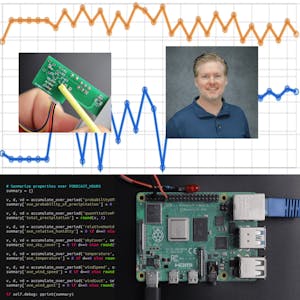Using Sensors With Your Raspberry Pi
About this Course
This course on integrating sensors with your Raspberry Pi is course 3 of a Coursera Specialization and can be taken separately or as part of the specialization. Although some material and explanations from the prior two courses are used, this course largely assumes no prior experience with sensors or data processing other than ideas about your own projects and an interest in building projects with sensors. This course focuses on core concepts and techniques in designing and integrating any sensor, rather than overly specific examples to copy. This method allows you to use these concepts in your projects to build highly customized sensors for your applications. Some of the ideas covered include calibrating sensors and the trade-offs between different mathematical methods of storing and applying calibration curves to your sensors. We also discuss accuracy, precision, and how to understand uncertainty in your measurements. We study methods of interfacing analog sensors with your Raspberry Pi (or other platform) with amplifiers and the theory and technique involved in reducing noise with spectral filters. Lastly, we borrow from the fields of data science, statistics, and digital signal processing, to post-process our data in Python.Created by: Johns Hopkins University

Related Online Courses
This course presents some important vignettes of a complex, highly diverse India that is also witnessing unprecedented changes since its formal independence in 1947 from Great Britain. The lectures... more
This course is aimed to demonstate how principles and methods from data science can be applied in clinical reporting. By the end of the course, learners will understand what requirements there are... more
The \"Geometric and Traffic Aspects of Highway\" course introduces Indian highway development and classification, covering highway alignment, cross-sectional elements, supporting facilities, and... more
By the end of the project, you will learn how to quantify risk-to-reward using Treynor Ratio, and calculate the value at risk for investment portfolio. ATTENTION: To take this course, it is... more
This specialization is intended for business professionals or students seeking to improve their English language skills by using business related content. Through three courses, you will cover, for... more








